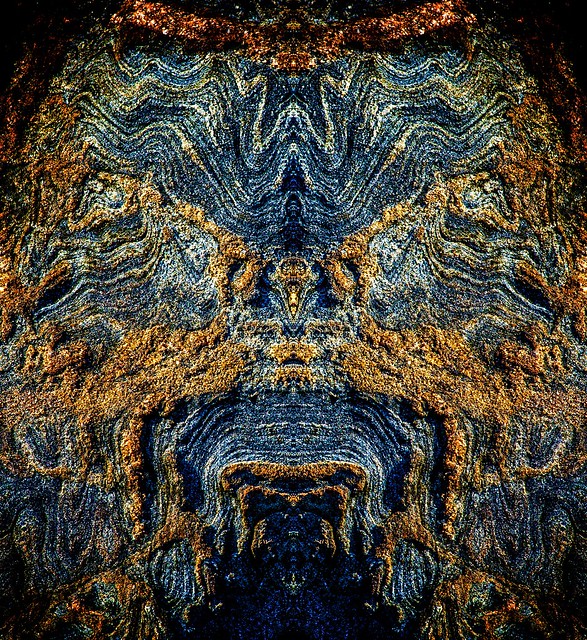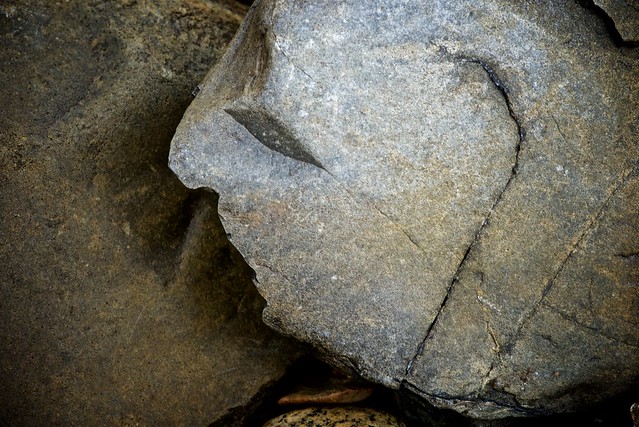I’ve been seeking subsetting and organizing principles to cope with the vast complexities of wood and rock portraits I’ve been collecting, and yesterday an interesting candidate presented itself as I was reading Rudolf Arnheim’s Visual Thinking (1969):
A concept, statistically defined, represents what a number of separate entities have in common. Quite often, however, a concept is instead a kind of highspot within a sweep of continuous transformations. In the Japanese kabuki theatre, an actor’s play suddenly petrifies into an immobile, monumental pose, the mi-e, which marks the climax of an important scene and epitomizes its character. (pg 182)

Mi-e generally follow a pattern, serving to focus our attention on a particular character or characters at an important moment during the play. Mi-e crystallize the action into a formal picture. More than mere focal points, mi-e are used to express to the audience a climax of great emotional tension. To perform a mi-e the actor must physically and emotionally wind himself up to the desired emotion, be it anger, fear, indignation, or surprise. Most mi-e are accompanied only by the beating of the wooden clappers (tsuke) … struck in a pattern called ba-tan, the two beats of which serve as a framework for the climax of the mi-e, in which the actor, while holding the pose rotates his head toward his adversary and crosses one eye, the other looking straight ahead.
…
The first beat, the ba, is hit as the actor strikes the pose. Then, as he rotates his head and glares, the mie is completed by the second, tan beat. The tsuke beater, or tsuke uchi as he is called, has the great responsibility of not only timing his beats to the actor’s movements but also feeling the emotional climax of the mi-e with the actor. (from Ronald Cavaye Kabuki: A Pocket Guide)
“How very like the moment of photography!” I thought. And sure enough some of my creatures are caught in mi-e, communicating directly to the viewer.

More commonly, the creatures appear self-absorbed, going about their business, brooding or just being grumpy or dozy or fey, not interacting with the watchers, or simply being unaware of their audience. I’ve assembled a gallery of some that seem to me “immobile, monumental” and performing for the viewers
Form Finds Form is a phrase I’m continuing to unpack and trying to more completely grok. My mother was wont to say it, and via Ann Berthoff it has crept into the field of Rhetoric and Composition. It seems to resonate with many things I’ve done over the years (photographic projects, surname mapping, improv music…), even though I can’t fully explain just what it Means. In this instance, my almost accidental discovery of the Form mi-e educed the subset of images, each an exemplar of that Form. But which found which?







